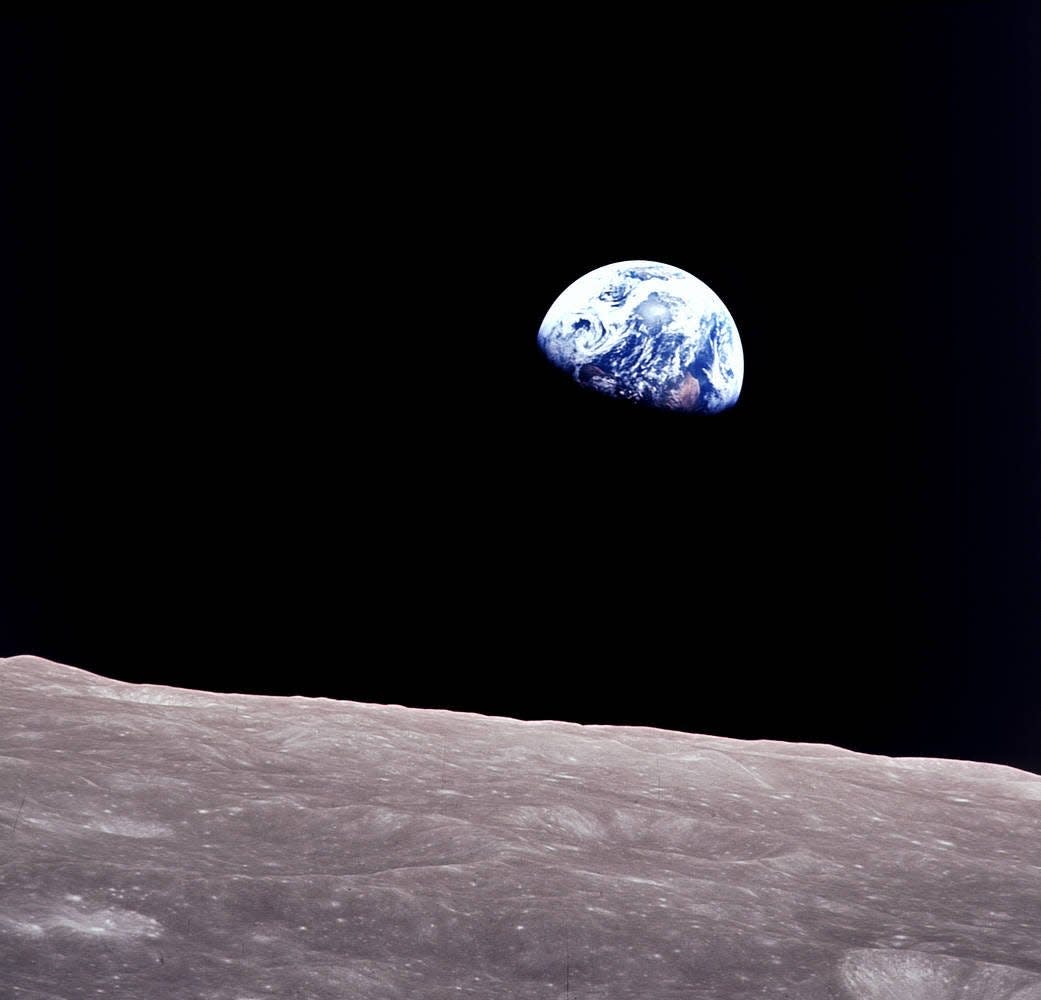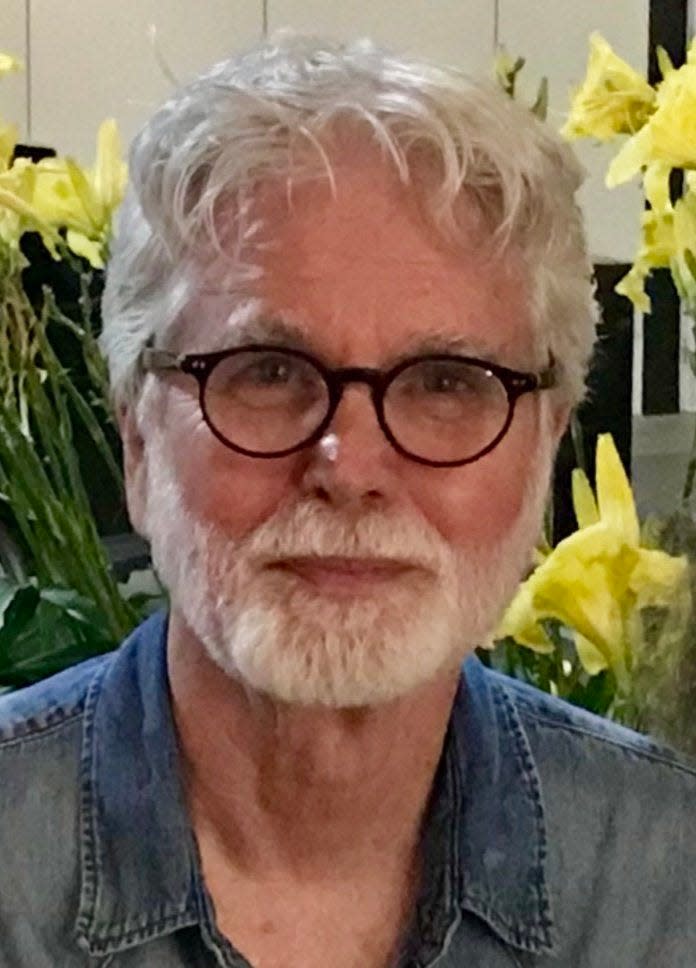Faith: Celebrate Earth Day in a way that loves, not dominates our planet

I was a junior in high school on April 22, 1970, when we launched the first Earth Day. More than the lectures offered at our student assembly, I recall the novelty of singing the Beatles’ “Let It Be” as one of the hymns during the Mass said at that gathering.
None of my fellow male Catholic students and I, in our requisite jackets and ties, ever imagined as we belted out, “When I find myself in times of trouble,” that half a century later we’d find ourselves in far worse “trouble” environmentally.
From the perspective of faith, we must admit that words from our Judeo-Christian sacred text started us out on the wrong foot. Genesis 1.26 -27 provides us with a mandate:
“Be fruitful and multiply, and fill the Earth and subdue it; and have dominion over the fish of the sea and over the birds of the air and over every living thing that moves upon the Earth.”
This common translation of this passage pretty much directs humans to do whatever they see fit with our environment. Yet Genesis 1.4, which emphasizes that all we have “dominion over” is “good” tempers this understanding. If creation is good, it’s worth preserving. Most contemporary interpretations of our Judeo-Christian cosmogeny, if you will, i.e. how we and our world came into being, therefore, elevate our human role as steward above that of dominator.
From a purely practical standpoint, we must admit that we won’t get what we hope from the seas if we continue to over-fish them. We won’t glean sufficient harvests from the fields if we fail to rotate crops, over-fertilize them, and rely too heavily on pesticides, thereby depleting the soil. By the same token, if we continue to overheat the planet through our release of greenhouse gasses, the ensuing droughts, floods, and fires will put at risk every iteration of life, including humans.
As an undergraduate, I made a study of cosmogonies from other traditions. One particularly drew my interest — that of the Huron Wyandot tribe. At one point in its story, a gopher dives into the abyss surrounding the turtle, which serves as the symbol of the Earth as it was conceived by many North American indigenous peoples. This rodent remains submerged for six years before it rises to collapse and die across the turtle’s shell. With the dirt retrieved from the dead mammal’s fingernails the other animals present there as well spread what we now call Earth across that carapace.

Scholars like Mercea Eliade and Carl Jung, who made lifetime studies of such tales, would refer to this gopher as a Christ-type. This creature, like Jesus in the Christian gospel accounts, gives its life so fellow creatures can have a home.
If we examine the creation stories of our native Texas tribes, we’ll come away with different images. The Apaches simply depict the Earth as a woman and the sky on top of her as a man. The Comanches, like Genesis, speak of creatures “formed from the Earth by the strength of mighty storms.” Yet in this myth, a “shape-shifting demon” also takes form — one that torments the other earthlings and as a result, ends up cast out into a “bottomless pit by the Great Spirit.” Through the fangs and stingers of venomous creatures, this demon is said then to take its revenge. The Cherokee, however, adhere to a tale of origins nearly identical to the Huron Wyandot myth of the gopher.
Some tribes strongly identify themselves with certain species. For the Tonkawa, who occupied the region we now know as Georgetown and Round Rock, it was the wolf and as a result, they pledged to never kill these creatures. The Swinomish people, with whom I worked closely in Washington state, on the other hand, even though they see the salmon as their brother, depend on it for their livelihood as they fish and sell as well as eat this venerated creature.
When we gather all these myths of origins and the ensuing practices of indigenous nations, we find a correlative: a profound reverence for the Earth. First peoples consistently see themselves in relation to their environment, not unlike how they see themselves in relation to each other.
I never look upon the two large masks that sit atop the bookcase in our living room — the pair of a wolf and a raven carved by the Swinomish tribal artist Mike Paul — and not think about how he struggled to keep native traditions alive by teaching young people his craft and the stories that go with these totems.
I do not want to stumble into naive romantic notions of the “noble savage” to help counter the environmental mess we’re now in. Yet, as we now reside on land once occupied by these first peoples, might we not join with them in their struggle to pass on to subsequent generations their sense of relationship with the Earth? Might we not return with them to their early interpretations of origins, rights and responsibilities to temper our Judeo-Christian sense of “dominion” over the land that they once faithfully tended to? Might we not emulate the life-sacrificing gopher in placing Earth’s preservation above our desire to scrape from it what we can for ourselves, thereby depleting its ability to breathe?
A couple of years before the first Earth Day, on Christmas Eve 1968, Bill Anders, aboard Apollo 8 as it rounded the dark side of the moon, snapped a photo with his own camera. It’s known as the “Earthrise” photo. It leaves us with a sense of a planet waking to a new day — like the baby Jesus on his first morning in Bethlehem.
This image, particularly when paired as it was when first published with words of the poet-laureate at the time, James Dickey, enabled many to begin to see this orb as a living, breathing organism — one with which we can more easily relate. Dickey wrote, “And Behold/the blue planet steeped in its dream.”
Behold this image afresh, on this Earth Day 2023. Let the lyrics of the Beatles echo in our heads to guide our actions and our policies when it comes to how we relate to this dreaming sphere and consider new ways to “let it be” so it might restore.
If it helps, scoop up a bit of its soil in your hand and let it rest beneath your fingernails for a while. We may then begin to feel a proper connection with our one and only home, allowing us to fall in love with her anew.
Terry Dawson is the author of “The After: Poems Only a Planet Could Love”, which focuses on climate change. It came out on Earth Day 2022 and is available on Amazon.com, Bookshop.com and at Book People.
This article originally appeared on Austin American-Statesman: Faith: Celebrate Earth Day with love of our planet

